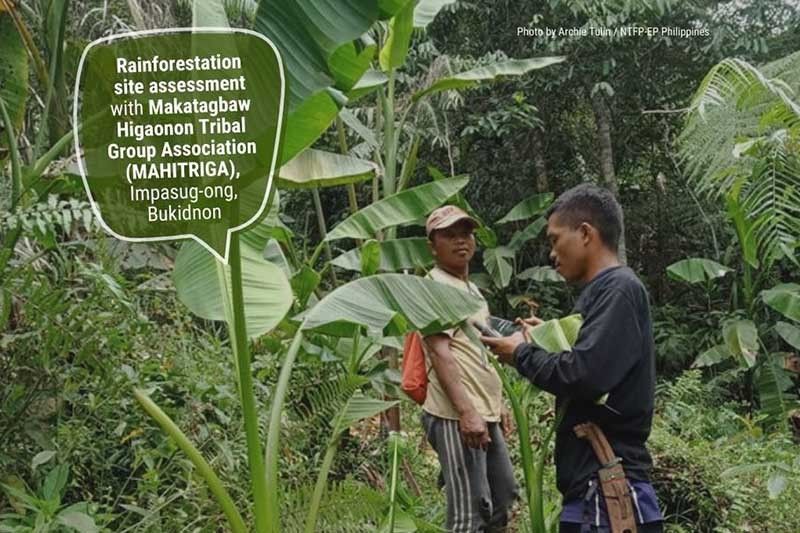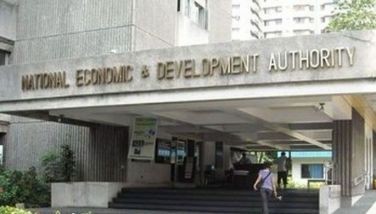Indigenous communities lead forest restoration powered by web searches

MANILA, Philippines — No one stewards the land better than indigenous communities. And in the Philippines, they are restoring forests in a program powered by people’s queries on an eco-conscious search engine.
Berlin-based search engine Ecosia, which invests its profits into ecological conservation projects, is now reforesting parts of the country. Since it was founded in 2009, it has planted over 123 million trees in 9,000 sites across the globe.
In the country, it has partnered with the Non-Timber Forest Products-Exchange Programme (NTFP-EP) Philippines to plant trees. NTFP-EP works with over 50 communities and indigenous peoples organizations in 12 provinces across the archipelago.
Under the program, 55,000 seedlings of native trees will be planted on 110 hectares of land. These will be intercropped with 46,000 fruit-bearing trees or abaca
The sites are located within the Sierra Madre—the country’s longest mountain range that is home to half of the remaining old-growth forest—in Luzon as well as the mountain ranges of Central Panay in Visayas, and Kimangkil-Kalanawan-Sumagaya-Pamalihi in Northern Mindanao.
NTFP-EP Philippines is working the following IP organizations for the Ecosia-supported rainforestation initiative:
- Dumagats of Sikap sa Kaunlaran in Tanay, Rizal and Samahan ng mga Katutubong Nag-aalmaciga in General Nakar, Quezon
- Akeanon Bukidnon of Samahang Madalagnon na Nagkakaisa in Madalag, Aklan
- Higaunons of Makatagbaw Higaonon Tribal Group Association and Siloo, Ananggi, Itoy, Amusig-Higaonon Tribal Council in Impasug-ong and Malitbog, Bukidnon
- MAMACILA Higaonon Tribal Community in Claveria, Misamis Oriental
The program will be implemented until June 2024.
Protectors of forests
More than 50% of the land on the planet is collectively held by indigenous peoples and local communities, and there is a growing body of literature that indigenous communities are the best guardians of the forests they call home.
A 2018 study of the Rights and Resources Initiative found that indigenous peoples and local communities are effective biodiversity and forest managers, and substantial investors in conservation.
Olivia Melendrez, NTFP-EP Philippines Sierra Madre Landscape coordinator, said the restoration areas are within the ancestral domains of the organization’s partner indigenous communities.
“Therefore, as owners of the land, these communities should lead the management of their own areas and implement the activities in their ancestral domain sustainable development and protection plan (ADSPP),” Melendrez told Philstar.com.
She added that restoration activities will also increase the adaptive capacity of indigenous communities, and ensure sustained quality of air, water and adequate supply of food and raw materials for their livelihoods.
Rainforestation
NTFP-EP Philippines uses a forest restoration strategy called rainforestation farming in its previous reforestation efforts and its current Ecosia-supported program. The system was developed by scientists at the Visayas State University in the 1990s and has since been adopted by the government as an official reforestation strategy.
Unlike reforestation efforts that use fast-growing gmelina and mahogany trees, the rainforestation farming system promotes the use of native tree species such as apitong, guijo, lauan, apitong, tanguile, and yakal to rehabilitate degraded landscapes.
In a book titled “Rainforestation: Paradigm Shift in Forest Restoration in the Philippines,” professor Paciencia Milan, dubbed as the “mother” of rainforestation in the country, stressed that forests become “more sustainable and increasingly diversified” if local trees are planted instead of foreign species.
“Because native tree species are better adapted to the local setting and they have a greater chance of survival, they will also more likely bring the forest back to its original ecological integrity,” she said.
Rainforestation has five phases: preparatory stage, nursery stage, site preparatory stage, outplanting stage, and rainforestation site maintenance and monitoring.
NTFP-EP Philippines said all its partner communities have already completed the first phase of the program. At the moment, seven native tree nurseries are being built.
“Forest restoration, through rainforestation, also provides direct and indirect environmental benefits to indigenous communities—from maintaining soil fertility, clean air, quality drinking water and water supply for farmlands, wild foods—and provides sustainable livelihood, inclusive landscape development and local employment,” said Alex Alabado, NTFP-EP enterprise development officer for Visayas.
Community livelihoods
NTFP-EP Philippines said most of the native trees selected for the rainforestation program are also non-timber forest products (NTFP), which are already being used by indigenous communities in their biodiversity-friendly livelihoods.
For example, Dumagats in General Nakar prefer to plant Almaciga since they tap resin as a means of livelihood. Almaciga resin is traded for manufacturing of paints and varnishes.
In Bukidnon, Higaunons, who have started their cinnamon enterprise, plant endemic cinnamon trees.
Abaca will be intercropped with the native trees in the mountains of Madalag, Aklan as the Akeanon Bukidnon cultural community relies on the harvest and trade of the plant’s fiber.
The organization also said most partner communities prefer native flowering trees to ensure honey harvests.
“Community livelihoods are directly linked to the health, sustained availability and abundance of NTFPs and flowering forest trees, and the overall health of the forest,” NTFP-EP Philippines said.
“[Community livelihood] minimizes risk of abandoning forest restoration initiatives. This also strengthens our indigenous peoples partners’ resolve in overall protection—not just as resource managers, but as owners and stewards of their ancestral land,” it added.
Other benefits
Data from the Forest Management Bureau showed that the Philippines, one of the most severely deforested countries in the tropics, had approximately 7.014 million hectares of forests as of 2015.
Ninety percent of the country was believed to be covered by forests in the 16th century but it declined to about 70% in the early 1900s. Between 1934 and the mid-1980s, around 10 million hectares of forest were lost.
Protecting the country’s forests is crucial to tackling the climate crisis and achieving conservation goals such as saving the plummeting populations of wildlife and maintaining the ecosystems that sustain humans.
Intact and restored forests are vital as carbon sinks, which contribute to both climate change adaptation and mitigation, Melendrez said.
“Forest restoration initiatives have an important role in protecting indigenous peoples and local communities from the destructive impacts of climate crisis. Healthy forests act as barriers against strong winds, heavy rain, flooding, soil erosion and landslides,” Alabado said.
- Latest
- Trending



























